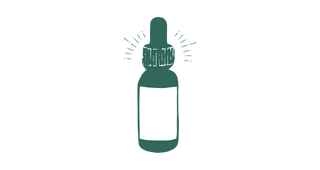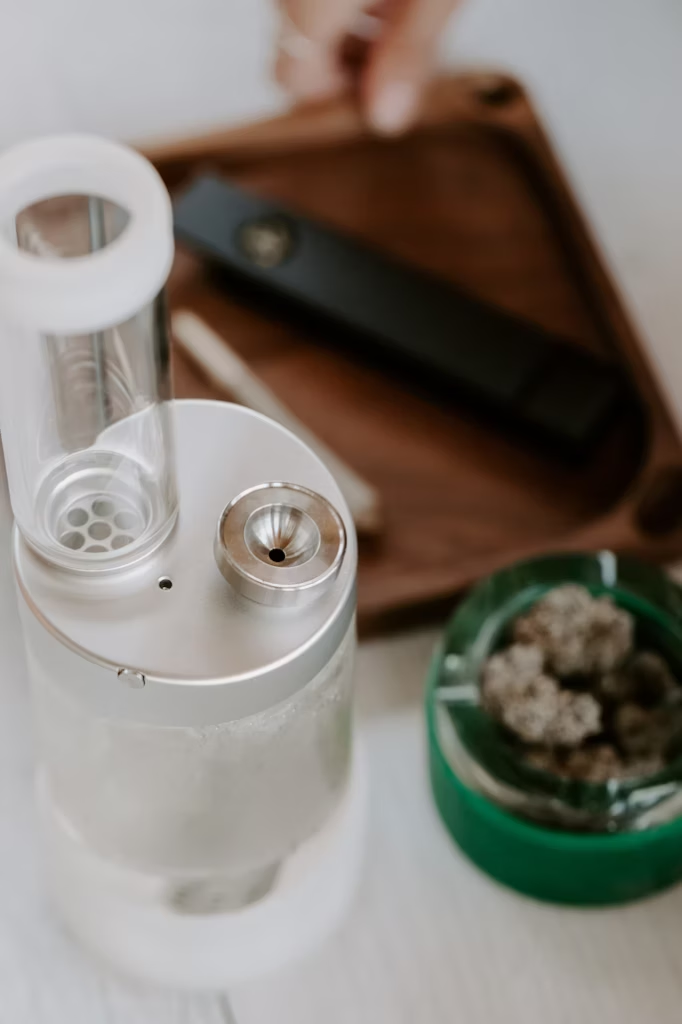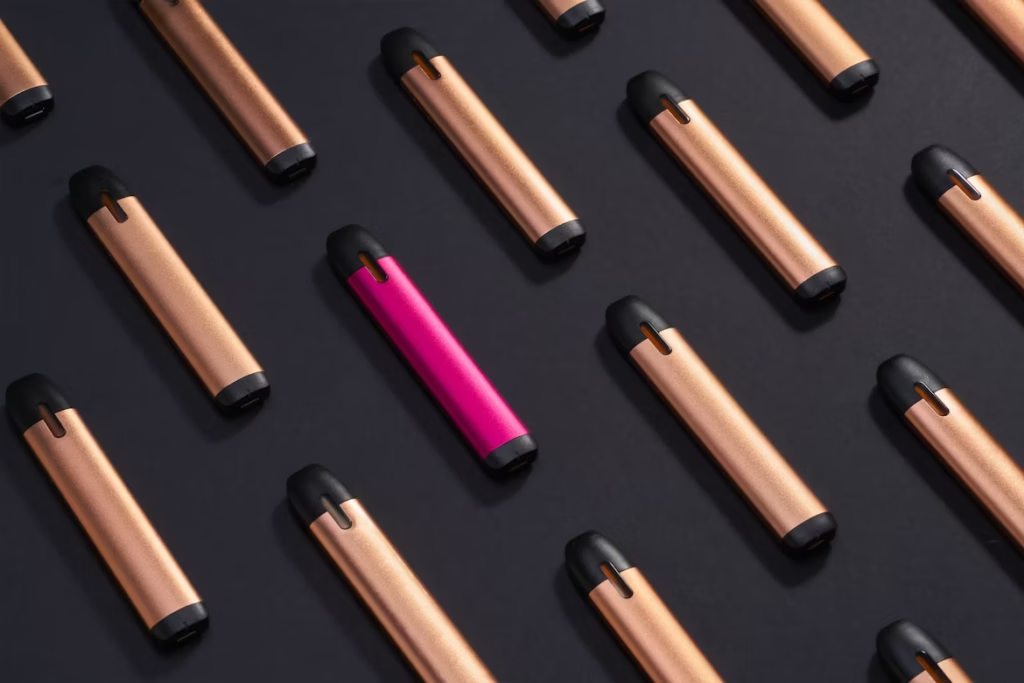According to the U.S. Centers for Disease Control and Prevention (CDC), more than 50 million adults in the United States deal with chronic pain — that's more than 20 percent of the adult population of the U.S. Nearly 8 percent deal with pain that impacts their ability to perform at least one major life activity. U.S. pharmacists estimate that about 2.1 million people in the U.S. use medical cannabis— and that doesn't include the number of people who turn to CBD for relief or to adults who use marijuana without a medical cannabis card.
Not surprisingly, scientists are turning their attention to studying the mechanics of cannabis for pain relief, though there are still big gaps in our knowledge of exactly how a little dab or a puff of flower shuts down the pain. Understanding what we do know can help you make better decisions about which cannabis strains and products are the most effective for your particular situation.
Cannabis and Pain Relief — What We Know
Cannabis has been used for more than 3,000 years to treat a wide variety of symptoms and conditions in cultures around the world. Its most common use in the U.S. today is to treat pain. There's a long history of anecdotal evidence and a growing body of peer-reviewed research to support the use of cannabis to deal with chronic, intractable pain — that is, persistent pain that resists other types of pain relief. Researchers have come to a common understanding that cannabis works by interacting with the body's endocannabinoid system.
What Is the Endocannabinoid System?
The endocannabinoid system (EC), first identified in the 1980s, is a part of your body, just like your respiratory system, your digestive system, and your circulatory system. It consists of the following three parts:
- Endocannabinoids, chemicals produced by your body that are similar to the cannabinoids found in plants, including cannabis.
- Cannabinoid receptors, found on the surfaces of your cells, which bond with endocannabinoids.
- Metabolic enzymes, which help break down endocannabinoids.
There are two main types of cannabinoid receptors — CB1 and CB2 — and they are found in either the central nervous system (along your spinal cord and brainstem) or in the peripheral nervous system, which is essentially a network that runs through your entire body. Through these receptors, endocannabinoids help regulate your appetite, digestion, fertility, immune response, memory, metabolism, mood, pain response and sleep. When any of those functions are out of whack, there's a good chance that your EC isn't working properly.
Cannabinoids and the Endocannabinoid System
Cannabinoids found in plants are similar or identical to the endocannabinoids that your body produces, so they can bind to the same receptors and provoke the same responses. While there are more than 100 known cannabinoids in the cannabis plant, the two best known are cannabidiol (CBD) and tetrahydrocannabinol (THC). Each of these acts differently in the body, but both affect the EC and can help reduce or manage pain.
CBD and THC — What's the Difference?
The most common way to describe the difference between CBD and THC is to note that THC is intoxicating, and CBD is not.
- CBD is the non-intoxicating cannabinoid, and it's what you'll find in hemp products that are legal at the federal level. Hemp products are required to have less than .3 percent THC, which is too little to get you high. It has some proven medical benefits, especially for certain types of pain.
- THC is the cannabinoid that gives you all the good feelings people associate with cannabis. Products that contain more than .3 percent THC are illegal at the federal level, but you can legally purchase them in states that have legalized medical or adult-use cannabis.
Because plants and products with less than .3 percent THC are legal in most U.S. states and are non-intoxicating — people who want pain relief without getting high often turn to CBD-only products, or low THC strains of cannabis. However, the most recent research suggests that by avoiding THC, these users may be missing out on the full benefit of cannabis for pain relief. In fact, at least one researcher believes that if you're looking for pain relief, you need to include THC. Elliot Altman, biology director at the Tennessee Center for Botanical Medicine Research, says if what you're looking for is pain relief, it's going to come from THC. His own research shows that CBD is useful for inflammatory or auto-immune problems, but not so helpful for most types of pain.
The Entourage Effect
While high-CBD strains have become popular with folks who want to avoid getting high, evidence suggests that a little THC makes CBD work better. This is called The Entourage Effect, which states that THC, CBD, terpenes and other Phyto-cannabinoids work together synergistically to enhance each others' beneficial effects. The Entourage Effect may explain why whole flower products seem to work better than CBD extracts for relieving pain.
Understanding CBD Ratios
While many dispensaries and growers now note the CBD:THC ratio for their products, it's not a universal practice. Many only provide a number for THC, or give a THC:CBD ratio. It can be confusing to even experienced consumers. If you have questions, your best option is to bring your questions directly to the experienced staff at the dispensary. They can help you calculate the ratio of the products they carry, and narrow down your choices.
Some of the most common ratios include 1:1, 5:1, 10:1, and 20:1. But what exactly do those numbers mean? Essentially, they mean that for every part of CBD in a dose, there are x parts of THC. A ratio of 1:1 means that there is as much CBD as THC in the product, while 10:1 tells you that there is 10 times as much CBD as THC.
It's important to remember that the ratio is not the same thing as the amount of CBD and THC in each dose. For example, one edible might have 1.5 milligrams of CBD and 1.5 milligrams of THC, while another has 5 milligrams of each, but they both have a 1:1 CBD to THC ratio.
If the label doesn't give a ratio, you can calculate it yourself if you have the amount of CBD and THC per dose. Find an online ratio calculator and enter the amount of CBD per serving in the first box, and the amount of THC per serving in the second box. The calculator will give you the appropriate ratio. For example, Garden Remedies CBD Watermelon Chews have 16.4 milligrams of CBD and 1.9 milligrams of THC per serving. If you enter that into a ratio calculator, the result (rounded to the nearest whole number) is an 8:1 CBD ratio.
In many cases, the label will list only the THC percentage, or only the CBD percentage. In those cases, it's likely that the product contains only CBD with little or no THC, or all THC.
What's the Best CBD Ratio for Pain Relief?
Unfortunately, there's no hard and fast answer to that question. There are just too many variables, including your own needs, so most consumers are left with trial and error to find the best CBD ratio to provide the relief they need. A few general things to keep in mind:
- Products with a high percentage of THC — above 18 percent — are likely to have significant psychoactive effects.
- Products with a percentage of CBD are less likely — or not at all likely — to get you high.
- Products with a 1:1 ratio of CBD and THC will give you a more balanced experience. You shouldn't expect a mind-blowing euphoria, but you're likely to experience some good feelings.
- What is your own personal experience with cannabis? If you have some experience with using cannabis, you can make an educated guess about which strains will provide the experience you're seeking.
Beyond that, when choosing cannabis for pain relief, you should consider the following factors.
What Kind of Pain Are You Experiencing?
As noted above, CBD and THC seem to have different effects in managing different types of pain. Overall, THC is most effective against all types of pain, while CBD seems to work best for pain resulting from inflammation. While that may sound very limiting, chronic pain is often a result of inflammatory conditions, such as arthritis or muscle pain.
If you're dealing with chronic pain from inflammation, a high CBD ratio may give you the relief you need. Even so, a little THC seems to boost the effectiveness. Ratios as high as 20:1 or even 10:1 may help, with little chance of giving you an unwanted buzz. The higher CBD ratios are also a good option for beginners, or those who haven't used cannabis in a while.
If you're dealing with neuropathic pain, you'll probably want the extra edge from a higher amount of THC. Ratios of 2:1, 4:1, 5:1 or even 10:1 are good choices, though you should expect some impairment.
Are You Trying to Avoid Intoxication?
For example, do you want to manage pain during the workday? In that case, you'll want to opt for a high-CBD option, which will provide some pain relief without affecting you otherwise.
- If you're trying to avoid impairment, it's a good plan to choose higher CBD ratios — 10:1 or higher are good choices for daytime dosing.
- For evening, weekend or bedtime use, you can try a 5:1 ratio, which will give you a chance to evaluate how you react to those higher doses of THC.
- 1:1 ratios or higher THC options are best for experienced users.
Beyond Ratios — The Best Way to Use Cannabis for Pain
In addition to considering whether to choose a CBD-dominant, THC-dominant or hybrid strain, you can also consider the many different ways to consume cannabis and reasons you might choose one over the other. While smoking and vaping are still the most common ways of delivery, edibles are a growing segment of the cannabis industry, with tinctures, salves and cannabis-infused ointments rapidly coming into the market. Here are a few things to consider when choosing the best cannabis products for pain relief.
Fast Relief
If you're looking for immediate relief from pain, inhalation is generally the best avenue. When you smoke, vape or dab, the cannabinoids go to your lungs, and then directly to your bloodstream. Edibles take longer to take effect, since they have to go through your stomach first, so you may not feel the beneficial effects for an hour or more. Vaping allows you to indulge more discreetly, and could be a good choice for that afternoon tension headache.
Long-lasting Relief
Flip the last point on its head. While you get quick results from a little puff, the effects also dissipate more quickly. Edibles, on the other hand, take longer to kick in, but also last longer. High CBD gummies or caplets could be a good choice to tame pain for the workday, while a balanced or high-THC gummy could be a better choice for bedtime pain relief and relaxation.
Localized Pain Relief
Cannabis-infused patches and ointments are a good choice for localized pain. There is some research to support the use of topical ointments to reduce arthritis pain and other pain caused by inflammation, and more recently, research that suggests CBD oil may be effective in reducing neuropathic pain, such as the burning and tingling associated with diabetes and some degenerative diseases.
Final Thoughts
The best evidence we have now is that whole plant products, whether flowers or extracts, provide the most effective pain relief. As researchers dig deeper into the secrets of cannabis, they'll undoubtedly reach firmer conclusions about things like dosing, appropriate CBD:THC ratios for different conditions, and how much the entourage effect actually has on your experience with different strains of cannabis. Until then, your best guide is your own history and the advice of an experienced cannabis technician or provider, as well as a consultation with a cannabis-friendly medical provider.
Sources:
Baylor University Medical Center Proceedings - Cannabidiol Primer for Health Professionals
U.S. Pharmacist - Cannabis for Chronic Pain
Future Medicine - Cannabis based medicines and pain: a review of potential synergistic and entourage effects
Leafly - Why CBD Works Better with a Little THC
Lealfy - Is the Entourage Effect Real?
Mashable - Understanding the Confusing World of CBD and THC Ratios
Current Pharmaceutical Biotechnology - The Effectiveness of Topical Cannabidiol Oil in Symptomatic Relief of Peripheral Neuropathy of the Lower Extremities
Medical News Today - CBD for Arthritis: Benefits, Use, and Side Effects
Pot.com - CBD and THC: How to Find Your Perfect Ratio (previously at https://www.pot.com/cbd-and-thc-why-the-ratios-matter/)















